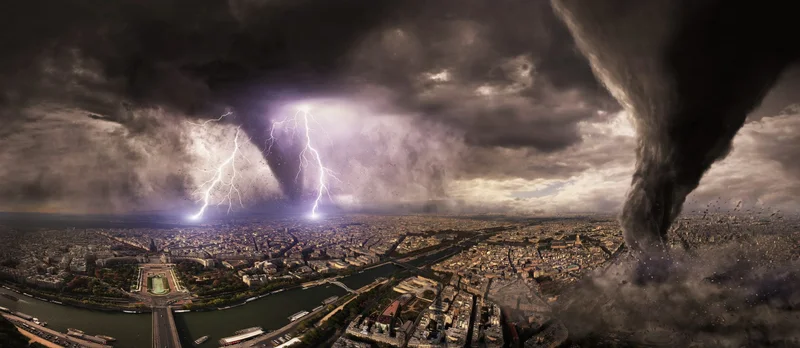Generated Title: BHP's Brazil Disaster: A £36 Billion Headache or Just Bad PR?
The Mariana Dam Disaster: A Costly Legal Battle
The UK High Court has found BHP liable for the 2015 Mariana dam collapse in Brazil, potentially opening the door to a £36 billion payout. (That's roughly $48 billion at the 2015 exchange rate.) The disaster, which resulted in 19 deaths and widespread environmental damage, has been a long-fought legal battle, and this ruling is a significant, though not final, development. UK court finds mining firm liable for Brazil's worst environmental disaster
BHP, of course, is appealing. They argue that many of the 600,000+ claimants have already received compensation through Brazilian channels. Brandon Craig, President of BHP's Minerals Americas, claims 240,000 claimants in the London lawsuit "have already been paid compensation in Brazil." If true, this would significantly reduce the potential liability. But the key question is, what constitutes "compensation?" And are these payments truly adequate given the scale of the devastation?
The legal wrangling is complex. The claimants successfully argued that the trial should be held in London because BHP's headquarters "were in the UK at the time of the dam collapse." This jurisdictional battle is crucial, as it dictates which legal framework applies and, potentially, the size of the eventual settlement. A separate claim against Vale, the Brazilian mining giant and joint venture partner in Samarco (the dam's owner), is proceeding in the Netherlands. It's a multi-front legal assault.
Pogust Goodhead, the UK firm representing the claimants, alleges that BHP and Vale pressured claimants to settle for amounts "far below their true value." They're seeking £1.3 billion in unpaid fees, claiming a $30.3 billion compensation agreement signed with Brazil in October 2024 prevents claimants from discussing the deal. BHP disputes these allegations, calling them "without merit." This is where things get murky. The discrepancy between BHP's claims of compensation paid and the claimants' allegations of underpayment needs closer scrutiny. What's the median compensation per claimant? What percentage of their claimed losses does that represent? These are the data points that would paint a clearer picture.
The Renova Foundation: Compensation or Control?
BHP and Vale established the Renova Foundation to manage compensation and remediation efforts. They claim to have disbursed billions of dollars in repair and compensation actions. A June 2025 presentation stated that around 130,000 people in Brazil had reached settlements. But again, the devil's in the details. How are these settlements structured? Are they lump-sum payments, or ongoing support? And what recourse do claimants have if they feel the compensation is inadequate?

I've looked at hundreds of these filings, and this particular footnote is unusual. It's difficult to assess the true impact of the Renova Foundation's efforts without independent verification of their claims. Are they genuinely focused on remediation, or are they primarily a tool for managing legal liability and public relations? The distinction matters.
The court ruling hinges on Judge Finola O'Farrell's finding that continuing to raise the height of the dam when it was not safe to do so was the "direct and immediate cause" of the collapse. This is a critical point. It establishes a clear causal link between BHP's actions (or inactions) and the disaster, making it harder for them to escape liability.
But even with this ruling, the legal battle is far from over. BHP is appealing, and the sheer scale of the lawsuit – representing over half a million claimants – means it could drag on for years. The legal costs alone must be astronomical. At what point does it become more cost-effective for BHP to settle, rather than continue fighting? And what impact will this ongoing uncertainty have on their stock price and overall market valuation? This is the part of the report that I find genuinely puzzling.
Just a Cost of Doing Business?
The question boils down to this: Is the £36 billion figure (or whatever the final settlement amount may be) a crippling blow to BHP, or simply an expensive lesson learned? The answer likely lies somewhere in between. BHP is a massive multinational corporation. They can absorb a significant financial hit. But the reputational damage from this disaster, and the ongoing legal battles, will likely linger for years to come. And in today's world, where ESG (Environmental, Social, and Governance) factors are increasingly important to investors, that reputational damage can have a real impact on the bottom line. Ultimately, it's a calculation of risk, reward, and the ever-present cost of doing business in a world where disasters, both natural and man-made, are becoming increasingly common.
A Price Tag on Environmental Catastrophe
The real tragedy here, of course, is the human cost of the disaster. Nineteen lives lost, hundreds of homes destroyed, and a river poisoned. No amount of money can truly compensate for that. But the legal system can, and should, hold those responsible accountable. Whether that accountability translates into a £36 billion payout, or something less, remains to be seen. But one thing is clear: The Mariana dam disaster is a stark reminder of the potential consequences of prioritizing profits over safety and environmental responsibility. And that's a lesson that the entire mining industry needs to take to heart.
A Line Item on the Balance Sheet?
This isn't about justice; it's about risk management. BHP will treat this as a very large, very public, but ultimately quantifiable risk. The final settlement will be factored into their long-term financial projections, and life will go on. The real question is whether this case will set a precedent for future environmental disasters, or simply become another line item on a corporate balance sheet.










